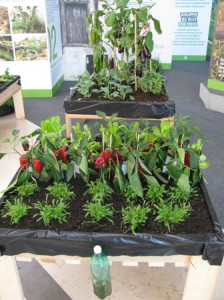- Climate change to bring lemons in Kent. Now for the bad news.
- Monitoring biodiversity in Africa and India.
- More Free Air Concentration Enrichment (FACE) research facilities needed, say those who work there.
- Ethnic vegetables? Yep, you heard me.
- Non-Wood Forest Products and Plant Breeding newsletters are out. Subscribe already!
- W.S. Merwin: poet and Guardian of Biodiversity.
Agrobiodiversity means wealth
Literally, I mean. The Chinese characters for pak choy, or Chinese cabbage (白菜), can also be pronounced to mean “100 types of prosperity and luck.” Which explains why this vegetable is a favourite of Chinese jade carvers, though their creations are usually somewhat smaller than the metre-long specimen pictured below.

Nibbles: Vavilov, GOSPs, Robot rice, Carrots, Crisis, Shade cacao, Churro sheep of the Navajo, Sorghum beer, Papal diet, chocolate, Carnival
- World Genepool at the N.I. Vavilov Institute of Plant Industry and Its Utilization in Agriculture. Anyone got a copy?
- Gloucester Old Spot pigs get protection. Not that they really need it.
- BASF takes hi-tech breeding to the next level: 40,000 individual rice plants on a robotic ride to the future.
- Rebsie does carrots.
- The perfect storm is one element of the triple crisis.
- Nitrogen-fixing shade trees really do feed young cacao trees.
- “Sheep is your backbone.”
- Bringing gluten-free sorghum beer to the huddled masses … of Colorado.
- Eat like a pope. (Not much diversity.)
- Cadbury heiress fancies starting a new chocolate company? Maybe she’ll go all varietal.
- Scientia pro Publica. Carnival time again.
Sowing new seeds in the English Midlands
The initiative, Sowing New Seeds, funded by the Big Lottery Local Food Fund, will directly enable many more gardeners in the East and West Midlands to grow non-traditional crops, while also documenting how to grow them based on the experiences of the region’s diverse communities.
Sound like a great idea from Garden Organic, and you can follow the progress of the work on a great new blog. Thanks to Nigel for the headsup.
Food for the City in Rome
There’s a great exhibit from the Food for the Cities project in FAO’s atrium this week on the occasion of the 22nd Session of the Committee on Agriculture. Here’s a quick look at a couple of the little container gardens (microgardens) they’ve created. Seem to be doing very well too.
